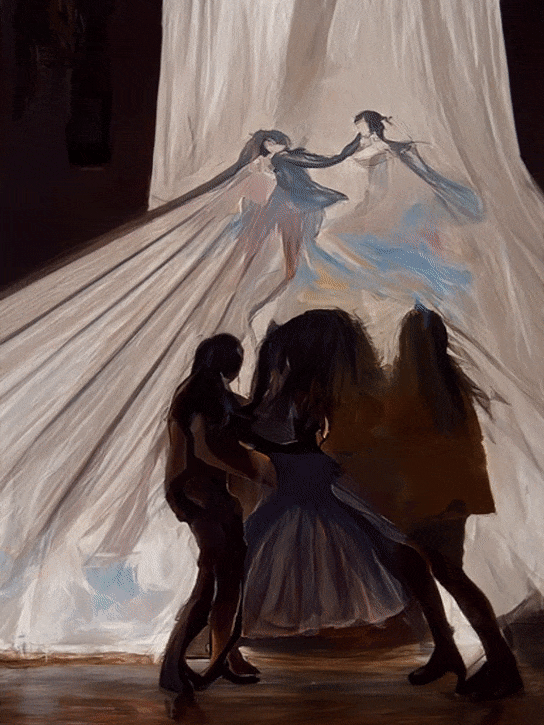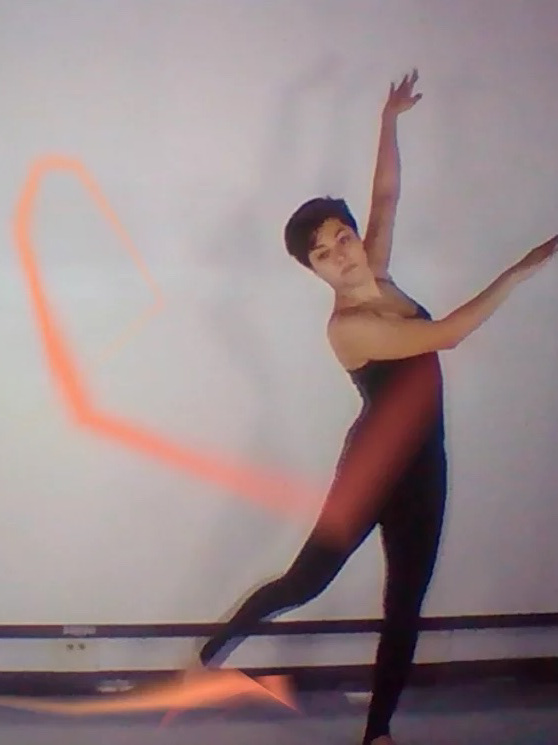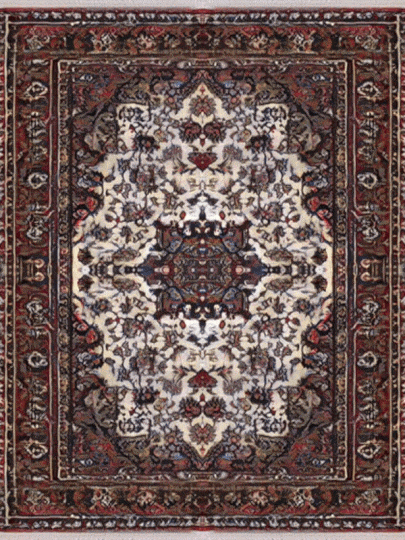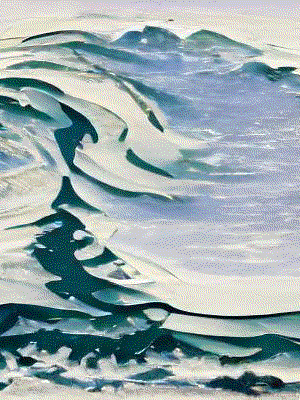Mahsa (Jina) Amini, 22 years old
In September 2022, Mahsa (Jina) Amini was arrested, beaten, and murdered by the Islamic Republic Morality Police in Iran for not wearing her hijab properly. The news resulted in protests across Iran and worldwide rallies with the motto “Woman, Life, Freedom”. The uprising has continued to this day and is now recognized as the first female-led revolution. The image of her illustrates the protests on the streets and the aftermath of her death.
Mahsa was the spark of this revolution, and her face serves as a symbol of the movement. In the top right corner of the image, a police car and soldiers who beat Mahsa to a coma loom ominously, and her gravestone reads "Mahsa, you won't die, your name becomes the key". Blood on the street attests to the violence and force used by the morality police against girls. The background depicts the city in turmoil, with protest fires and smoke rising while authorities attempt to quell dissent. Prison bars and corridors represent the hidden horrors of torture that take place out of sight. A woman is shown deliberately blinded by a bullet, standing in for the many others who share her fate. Another woman grieves for her loss, perhaps as a mother who has lost her child. A man lies at the bottom of the image with smoke pouring from his head, his tilted head, and blood from his ear indicating a fatal gunshot wound. Finally, a woman stares out with a look of determination, ready to reclaim what is rightfully hers.
Nika Shakarami, 16 years old
Nika was among many brave individuals who took to the streets to protest the murder of Mahsa Amini. Sadly, she was lost for weeks, with authorities offering no answers to her family until her body was finally returned to them. Officials claimed she jumped from a rooftop, but her skull showed evidence of severe beatings. Nika was buried on her 17th birthday, a stark reminder of the dangers faced by those who dare to speak out for their rights.
This image presented here captures the spirit of Nika's courage and the struggle she fought for. In the foreground, a woman with free hair stands on a rooftop, surveying the lies of the state about her death. In the background, people protest in the streets, while bodies fall and blood splatters in the chaos. Though her face is not recognizable showing a landscape of the city as her last whereabouts, her figure and stance convey a sense of determination and defiance in the face of oppression. She holds her hand behind her head, as if bracing herself against the weight of the struggle.
Hadis Najafi, 23 years old
Hadis is another tragic victim of the Iranian regime's violent response to protests who was shot six times during a demonstration. On the 40th day after her death, her hometown rose up in her memory to protest the regime once again. The streets were packed with people, so much so that the regime's forces were unable to enter the crowd on foot and instead resorted to shooting bullets and tear gas from a helicopter overhead.
The image presented here captures the intense emotions and turmoil of that day. In the center of the picture, a woman sets her scarf on fire, a powerful symbol of resistance and defiance. At the top, a man aims a gun, representing the violence and brutality of the regime's response to peaceful protests. In the background, people march in the streets, their bodies obscured by the smoke and chaos of tear gas and gunfire. The image is a poignant and stirring reminder of the sacrifices made by so many in the fight for freedom and justice in Iran.
Sarina Esmailzadeh, 16 years old
In this illustrated image, Sarina's animated T-shirt mirrors the chaos on the streets with lighters ablaze and Molotov cocktails reigning supreme. Her face is blurry, reflecting the damage inflicted when her body was returned to her family. The presence of a student's morning lineup and backpack serve as a poignant reminder that she was just a high school student. In the top left corner, we see figures, possibly suppressors, conspiring to bury the truth. The sprawling cityscape alludes to the setting of her tragic story and the high-rise buildings evoke memories of the Nika rooftop incident and subsequent cover-ups.
Yalda Aghafazli, 19 years old
In this artwork, Yalda is depicted as the queen of Solstice (Yalda) with a crown of pomegranates. The use of pomegranates symbolizes her tears, blood, and silenced voice. Yalda was detained by the IR police during a protest and later committed suicide three days after her release. The 40th day after her death coincided with the Iranian celebration of Yalda, the longest night of the year. In the artwork, soldiers are shown beating and harassing women behind bars, while Yalda's voice message to her friend recounts the extreme physical abuse she suffered.
Mohammad Mehdi (Koumar) Karami, 21 years old
In this picture, we see the injustice suffered by Mohammad Mehdi, an Iranian-Kurdish man executed by the Islamic Republic of Iran for his alleged involvement in the killing of a Basij militiaman during a protest. Along with Mohammad Hosseini, he was convicted of "corruption on Earth" with "shoddy evidence". The image depicts the noose used in his execution, a man grieving and pleading his innocence, an angry mullah, and a trashcan on fire as a symbol of the supposed "worst" thing he did during the protest. It highlights the cruelty of the Iranian justice system and the human rights violations committed against its citizens.
Anonymous
This photo depicts the harsh reality faced by the LGBTQ+ community in Iran, where their existence and love are criminalized, and they risk facing execution by law. Two men are captured in a brave moment, kissing in front of the Azadi tower, while the Islamic art on the surface serves as a stark contrast to the hidden darkness they face. The eyes at the bottom of the image symbolize the constant surveillance and scrutiny they face from society and the authorities. The rope and executed bodies serve as a stark reminder of the injustice and tragic fate that often befalls members of the LGBTQ+ community in Iran.








